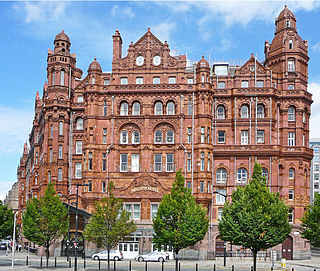
The Midland Hotel is a grand hotel in Manchester, England. Opened in 1903, it was built by the Midland Railway to serve Manchester Central railway station, its northern terminus for its rail services to London St Pancras. It faces onto St Peter's Square. The hotel was designed by Charles Trubshaw in Edwardian Baroque style and is a Grade II* listed building.
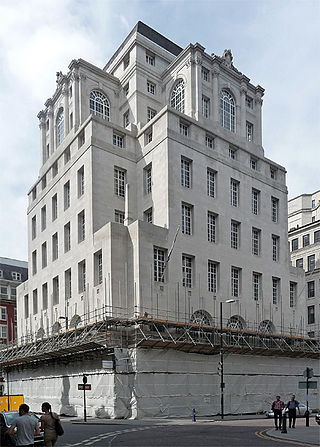
100 King Street, formerly the Midland Bank, is a former bank premises on King Street, Manchester, England. It was designed by Sir Edwin Lutyens in 1928 and constructed in 1933–35. It is Lutyens' major work in Manchester and was designated a Grade II* listed building in 1974.

King Street is one of the most important thoroughfares of Manchester city centre, England. For much of the 20th century it was the centre of the north-west banking industry but it has become progressively dominated by upmarket retail instead of large banks.

St Ann's Church is a Church of England parish church in Manchester, England. Although named after St Anne, it also pays tribute to the patron of the church, Ann, Lady Bland. St Ann's Church is a Grade I listed building.

St. Michael's Church is an Anglican parish church in Ashton-under-Lyne, Tameside, Greater Manchester, England. The church is a Grade I Listed Building. The church dates back to at least 1262, and a church on the site was mentioned in the Domesday Book. The church was rebuilt in the fifteenth century; however little of the previous church remains after it was rebuilt again in the nineteenth century and is still an active place of worship.

St George's Church is in Buxton Road, Heaviley, an area of Stockport, Greater Manchester, England. It is an active Anglican parish church in the deanery of Stockport, the archdeaconry of Macclesfield, and the diocese of Chester. Its benefice is united with that of St Gabriel, Adswood. The church is recorded in the National Heritage List for England as a designated Grade I listed building. The authors of the Buildings of England series express the opinion that it is "by far the grandest church of Stockport", and state "St George is a church on a splendid scale". According to the visitors' guide to the church, the Rt Revd Geoffrey Fisher, former archbishop of Canterbury, said that it is "the finest church built in England since the Reformation".

The Edgar Wood Centre is a former Church of Christ, Scientist building in Victoria Park, Manchester, England. The church was designed by Edgar Wood in 1903. Nikolaus Pevsner considered it "the only religious building in Lancashire that would be indispensable in a survey of twentieth century church design in all England". It is a Grade I listed building and has been on the Heritage at Risk Register published by Historic England.

The Church of All Souls is a redundant Anglican church in Astley Street, Astley Bridge, Bolton, Lancashire, England. It is recorded in the National Heritage List for England as a designated Grade II* listed building, and is under the care of the Churches Conservation Trust. As of 2010, the church is being converted into a community centre.

Charles Henry Heathcote was a British architect who practised in Manchester. He was articled to the church architects Charles Hansom, of Clifton, Bristol. He was awarded the RI Medal of Merit in 1868, and started his own practice in 1872.

Asia House at No. 82 Princess Street, Manchester, England, is an early 20th century packing and shipping warehouse built between 1906 and 1909 in an Edwardian Baroque style. It is a Grade II* listed building as at 3 October 1974. Nikolaus Pevsner's The Buildings of England describes the warehouse, and its companion, No. 86, Manchester House, as "quite splendid ... good examples of the warehouse type designed for multiple occupation by shipping merchants". It attributes its design to I.R.E. Birkett, architect of the Grade II listed companion building, Manchester House, which is similar in design. English Heritage attributes it to Harry S. Fairhurst. Asia House has an "exceptionally rich" entrance hall and stairwell, "lined with veined marble and green and cream faience, with designs of trees and Art Nouveau stained glass".
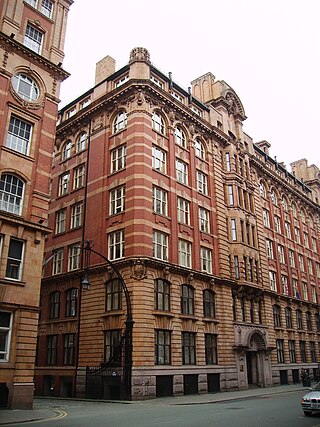
India House in Whitworth Street, Manchester, England, is a packing and shipping warehouse built in 1906 for Lloyd's Packing Warehouses Limited, which had, by merger, become the dominant commercial packing company in early-20th century Manchester. It is in the favoured Edwardian Baroque style and is steel-framed, with cladding of buff terracotta and red brick with buff terracotta dressings. It is a Grade II* listed building as of 3 October 1974.

The Reform Club in Manchester, England, is a former gentlemen's club dating from the Victorian era. Built in 1870–1871 in the Venetian Gothic style, it was designed by Edward Salomons, in collaboration with an Irish architect, John Philpot Jones. The building is situated on the corner of King Street and Spring Gardens. Claire Hartwell, in her Manchester Pevsner City Guide considers the club Salomons' "best city-centre building" and it has a Grade II* heritage designation. The contract for construction was awarded to Mr Nield, a Manchester builder, and had a value of £20,000. The Reform was constructed as the club house for Manchester's Liberal Party, and was opened by Granville Leveson-Gower, 2nd Earl Granville, Liberal Foreign Secretary, on 19 October 1871.

38 and 42 Mosley Street in Manchester, England, is a double-block Victorian bank constructed between 1862 and c. 1880 for the Manchester and Salford Bank. It was occupied in 2001 by the Royal Bank of Scotland. The original block of 1862 was the "last great work" of Edward Walters, and the extension of the 1880s was by his successors Barker and Ellis. It is a Grade II* listed building.
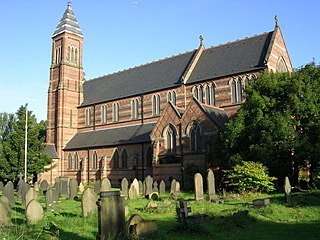
The Church of St Cross, Clayton, Manchester, is a Victorian church by William Butterfield, built in 1863–66. It was designated a grade II* listed building in 1963.
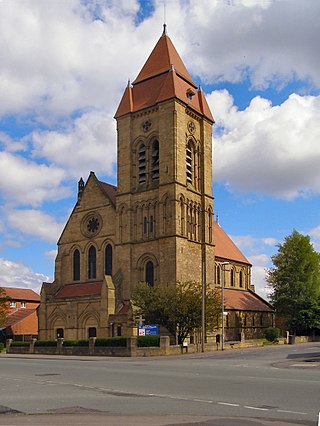
The Church of St John the Evangelist is in Waterloo Road, Cheetham Hill, Manchester, England. It is an active Anglican parish church in the deanery of North Manchester, the archdeaconry of Manchester, and the diocese of Manchester. The church is recorded in the National Heritage List for England as a designated Grade II* listed building.

Central Library is a public library in Blackpool, Lancashire, England. The building that contains the library and the Grundy Art Gallery has been designated a Grade II listed building by English Heritage.

Rochdale Town Hall is a Victorian-era municipal building in Rochdale, Greater Manchester, England. It is "widely recognised as being one of the finest municipal buildings in the country", and is recorded in the National Heritage List for England as a designated Grade I listed building.

Portland Street is a street in Manchester, England, which runs from Piccadilly at its junction with Newton Street south-westwards to Oxford Street at its junction with Chepstow Street. The major buildings of Portland Street include the largest former warehouse in the city centre, Watts Warehouse, the former Bank of England Building and other former warehouses on the corners of Princess Street.

33 Eastgate Street, Chester, at the corner of Eastgate Street and St Werburgh Street, Chester, England, was built in 1859–60 for the Chester Bank and, as of 2012, it continues in use as the NatWest Bank. It is recorded in the National Heritage List for England as a designated Grade II* listed building. It is in Neoclassical style, but was built at the time that the Black-and-white Revival was underway in the city, and was therefore the subject of much criticism for being "out of place". It consists of three storeys, with five bays on the Eastgate Street side, and three bays facing St Werburgh Street. The ground floor is rusticated with tall round-arched openings. On the side facing Eastgate Street the middle three bays of the upper storeys are occupied by a blank portico with four Corinthian columns supporting a pediment with modillion cornices. All the windows are sashes. The banking hall has a panelled ceiling carried on four Ionic columns.

Spring Gardens is an important thoroughfare in Manchester city centre, England. This L-shaped street, formerly the centre of the North West's banking industry, has five Grade II listed buildings and is part of the Upper King Street conservation area.


























